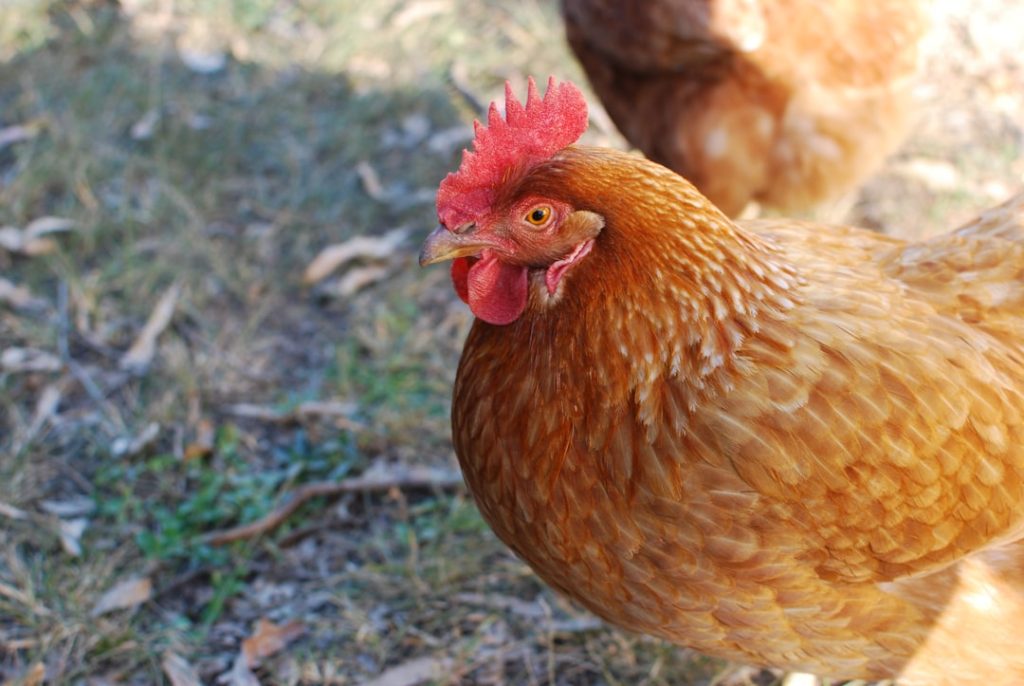Bantam chickens are miniature versions of standard chicken breeds, characterized by their small size and distinctive personalities. Often called “toy” or “miniature” chickens, bantams are popular among poultry enthusiasts due to their unique appearance, friendly nature, and suitability for small spaces. These diminutive birds exhibit a wide range of colors and feather patterns, making them attractive to hobbyists and breeders.
The history of bantam chickens can be traced back to Asia and Europe, where they were initially bred for ornamental and exhibition purposes. Over time, they have also become valued for egg production and as companion animals. Bantams are known for their strong brooding instincts and are excellent mothers, capable of hatching and raising their own chicks.
Their small size and gentle temperament make them ideal for families with children, as they are easy to handle and interact with. Bantam chickens are a popular addition to backyard flocks, providing entertainment and enjoyment to their owners through their charming personalities and striking appearances. Their compact size allows them to thrive in smaller spaces, making them suitable for urban and suburban environments where space may be limited.
Table of Contents
- 1 Characteristics and Physical Traits of Bantam Chickens
- 2 Popular Bantam Chicken Breeds
- 3 Care and Maintenance of Bantam Chickens
- 4 Breeding and Raising Bantam Chickens
- 5 Uses and Purposes of Bantam Chickens
- 6 Conclusion and Final Thoughts on Bantam Chicken Breeds
- 7 FAQs
- 7.1 What are bantam chickens?
- 7.2 What are some popular bantam chicken breeds?
- 7.3 What are the advantages of keeping bantam chickens?
- 7.4 What are the differences between bantam and standard chicken breeds?
- 7.5 Are bantam chickens good for egg production?
- 7.6 What are some considerations for raising bantam chickens?
Key Takeaways
- Bantam chickens are smaller versions of standard chicken breeds, making them popular for backyard poultry keeping.
- Bantam chickens come in a variety of colors and feather patterns, with unique physical traits such as feathered feet and crests.
- Popular bantam chicken breeds include the Silkie, Serama, and Pekin, each with their own distinct characteristics and personalities.
- Care and maintenance of bantam chickens involves providing proper housing, nutrition, and protection from predators.
- Breeding and raising bantam chickens can be a rewarding experience, with opportunities to hatch and raise chicks for show or as pets.
Characteristics and Physical Traits of Bantam Chickens
Bantam chickens are a unique and charming breed, prized for their small size, striking appearance, and amiable temperament.
Physical Characteristics
Bantam chickens are characterized by their small size, with most breeds weighing between 1-2 pounds. They have a compact, rounded body shape and short legs, giving them a cute and dainty appearance. Their feathers come in a wide range of colors and patterns, including solid colors, mottled, laced, and striped varieties.
Distinctive Features
Bantams also have distinctive feathering on their feet, known as “muffs” and “beards,” which add to their unique and charming look. In addition to their physical traits, bantam chickens are known for their friendly and sociable nature. They are often described as being more docile and less flighty than standard chicken breeds, making them a popular choice for backyard pets.
Behavior and Abilities
Bantams are also known for their vocalizations, with some breeds being more talkative than others. They are active foragers and enjoy scratching and pecking around the yard, making them excellent at controlling pests and keeping the area tidy.
Making Great Backyard Pets
Overall, bantam chickens make wonderful additions to any backyard flock, bringing joy and entertainment to their owners with their delightful personalities and endearing physical traits.
Popular Bantam Chicken Breeds

There are numerous bantam chicken breeds, each with its own unique characteristics and traits. Some of the most popular bantam breeds include the Silkie, Serama, Pekin, Dutch, and Sebright. The Silkie is perhaps one of the most well-known bantam breeds, prized for its fluffy plumage, gentle nature, and broody tendencies.
The Serama is the smallest breed of chicken in the world, known for its confident demeanor and striking appearance. Pekin bantams are beloved for their round, fluffy bodies and friendly personalities, making them a favorite among poultry enthusiasts. Dutch bantams are known for their striking color patterns and elegant appearance, while Sebright bantams are prized for their laced feathers and upright carriage.
These are just a few examples of the many bantam breeds available, each with its own unique qualities and characteristics. Whether you’re looking for a small, friendly pet or a striking exhibition bird, there is a bantam breed to suit every preference and purpose. In addition to their diverse appearances, bantam breeds also vary in their egg-laying abilities and broodiness.
Some breeds are prolific layers, while others are more focused on raising chicks. Whether you’re looking for a reliable source of eggs or a dedicated mother hen, there is a bantam breed to meet your needs. Overall, the wide variety of bantam chicken breeds ensures that there is a perfect match for every poultry enthusiast.
Care and Maintenance of Bantam Chickens
Caring for bantam chickens is relatively straightforward, requiring the same basic needs as standard chicken breeds. They need access to fresh water, high-quality feed, shelter from the elements, and a safe outdoor space to roam and forage. Bantams can be kept in smaller coops or runs due to their diminutive size, making them an ideal choice for urban or suburban settings.
It’s important to provide them with adequate space to exercise and explore, as well as protection from predators such as hawks, raccoons, and neighborhood dogs. Bantams also require regular grooming to keep their feathers clean and healthy. This includes dust baths to help control parasites and mites, as well as occasional feather trimming to prevent matting or excessive growth.
Additionally, bantams should be provided with appropriate nesting boxes and bedding material to encourage egg-laying and broodiness. Regular health checks are also essential to monitor for signs of illness or injury. Overall, caring for bantam chickens is a rewarding experience that requires attention to their basic needs and regular maintenance.
With proper care and attention, bantams can thrive in a backyard setting, providing joy and entertainment to their owners with their charming personalities and striking appearances.
Breeding and Raising Bantam Chickens
Breeding bantam chickens can be a rewarding endeavor for poultry enthusiasts interested in preserving or improving specific traits within a breed. Breeding programs often focus on selecting birds with desirable characteristics such as color patterns, feather quality, egg production, or temperament. Careful attention should be paid to genetic diversity and avoiding inbreeding to maintain the health and vitality of the flock.
Raising bantam chicks requires similar care to standard chicks, including providing warmth, proper nutrition, and protection from predators. Broody hens can be used to hatch eggs naturally or an incubator can be used for artificial hatching. Once hatched, chicks should be kept in a warm brooder until they are old enough to join the adult flock.
It’s important to provide young bantams with socialization opportunities to ensure they develop into well-adjusted adults. This includes handling them gently from a young age and allowing them to interact with other chickens in a safe environment. With proper care and attention, bantam chicks can grow into healthy adults that will contribute to the diversity and vitality of the flock.
Uses and Purposes of Bantam Chickens

Ornamental Value and Space Efficiency
Their small size makes them well-suited for small backyard spaces or urban environments where space may be limited, and their ornamental qualities make them popular choices for exhibition shows and poultry competitions.
Egg Laying and Broodiness
In addition to their ornamental value, bantams are also valued for their egg-laying abilities, providing a reliable source of fresh eggs for small households. They are also known for their broodiness and make excellent mothers, often hatching and raising their own chicks with great care.
Companionship and Pet Quality
Bantam chickens are cherished as pets due to their friendly nature and charming personalities. They are often described as being more docile and less flighty than standard chicken breeds, making them an ideal choice for families with children or individuals seeking companionship in their backyard flock.
Conclusion and Final Thoughts on Bantam Chicken Breeds
In conclusion, bantam chickens are a delightful addition to any backyard flock due to their small size, striking appearance, friendly demeanor, and versatility. With a rich history dating back to Asia and Europe, bantams have become valued for their ornamental qualities as well as their egg-laying abilities and suitability as pets. There is a wide variety of bantam breeds available, each with its own unique characteristics and traits to suit every preference and purpose.
Caring for bantam chickens requires attention to their basic needs such as fresh water, high-quality feed, shelter from the elements, grooming, regular health checks, breeding programs focus on selecting birds with desirable characteristics such as color patterns feather quality egg production or temperament raising bantam chicks requires similar care to standard chicks including providing warmth proper nutrition protection from predators socialization opportunities uses of bantam chickens include ornamental value egg production broodiness companionship overall bantam chickens serve multiple purposes including ornamental value egg production broodiness companionship in conclusion bantam chickens are a delightful addition to any backyard flock due to their small size striking appearance friendly demeanor versatility
If you’re considering raising bantam chickens, you may also be interested in learning how to turn a shed into a chicken coop. This article from Poultry Wizard provides helpful tips and guidance on transforming a shed into a suitable living space for your feathered friends. Check it out here.
FAQs
What are bantam chickens?
Bantam chickens are small breeds of chickens, typically one-fourth to one-fifth the size of standard chicken breeds. They are known for their compact size and often have ornamental or decorative qualities.
What are some popular bantam chicken breeds?
Some popular bantam chicken breeds include the Silkie, Sebright, Pekin, and Dutch bantams. Each breed has its own unique characteristics and appearance.
What are the advantages of keeping bantam chickens?
Bantam chickens are often kept for their smaller size, making them suitable for smaller yards or urban environments. They are also popular for their ornamental qualities and can be raised for show purposes.
What are the differences between bantam and standard chicken breeds?
The main difference between bantam and standard chicken breeds is their size. Bantam chickens are much smaller in size, with hens typically weighing around 1-2 pounds and roosters weighing around 1.5-2.5 pounds.
Are bantam chickens good for egg production?
While bantam chickens are not known for their egg-laying abilities compared to standard breeds, some bantam breeds, such as the Sebright and Dutch, can still produce a fair amount of small to medium-sized eggs.
What are some considerations for raising bantam chickens?
When raising bantam chickens, it’s important to provide them with appropriate housing, feed, and care. Additionally, bantam chickens may require special attention to protect them from predators due to their smaller size.

Meet Walter, the feathered-friend fanatic of Florida! Nestled in the sunshine state, Walter struts through life with his feathered companions, clucking his way to happiness. With a coop that’s fancier than a five-star hotel, he’s the Don Juan of the chicken world. When he’s not teaching his hens to do the cha-cha, you’ll find him in a heated debate with his prized rooster, Sir Clucks-a-Lot. Walter’s poultry passion is no yolk; he’s the sunny-side-up guy you never knew you needed in your flock of friends!


Meet Walter, the feathered-friend fanatic of Florida! Nestled in the sunshine state, Walter struts through life with his feathered companions, clucking his way to happiness. With a coop that’s fancier than a five-star hotel, he’s the Don Juan of the chicken world. When he’s not teaching his hens to do the cha-cha, you’ll find him in a heated debate with his prized rooster, Sir Clucks-a-Lot. Walter’s poultry passion is no yolk; he’s the sunny-side-up guy you never knew you needed in your flock of friends!








